Let me walk you through the ways in which this code fails and how the compiler allows you to shoot yourself in the foot.
If you step through the code using the debugger you can see what happens.

After the initialization of Thing1 you can see that FData is filled with all zeros.
Strangely enough Thing2 is fine.
Therefore the error is in CreateThing. Let's investigate further...
In the oddly named constructor CreateThing you have the following line:
FData := @FBuf[1];
This looks like a simple assignment, but is really a call to DynArrayAssign
Project97.dpr.32: FData := @FBuf[1];
0042373A 8B45FC mov eax,[ebp-$04]
0042373D 83C008 add eax,$08
00423743 8B5204 mov edx,[edx+$04]
00423746 42 inc edx
00423747 8B0DE03C4000 mov ecx,[$00403ce0]
0042374D E8E66DFEFF call @DynArrayAsg <<-- lots of stuff happening here.
One of the checks DynArrayAsg performs is to check whether the source dynamic array is empty or not.
DynArrayAsg also does a few other things which you need to be aware about.
Let's first have a look at the structure of a dynamic array; it's not just a simple pointer to an array!
Offset 32/64 | Contents
--------------+--------------------------------------------------------------
-8/-12 | 32 bit reference count
-4/-8 | 32 or 64 bit length indicator
0/ 0 | data of the array.
Performing FData = @FBuf[1] you are messing up with the prefix fields of the dynamic array.
The 4 bytes in front of @Fbuf[1] are interpreted as the length.
For Thing1 these are:
-8 (refcnt) -4 (len) 0 (data)
FBuf: 01 00 00 00 08 00 00 00 00 'S' 'n' .....
FData: 00 00 00 08 00 00 00 00 .............. //Hey that's a zero length.
Oops, when DynArrayAsg starts investigating it sees that what it thinks is the source for the assign has a length of zero, i.e. it thinks the source is empty and does not assign anything. It leaves FData unchanged!
Does Thing2 work as intended?
It looks like it does, but it actually fails in rather a bad way, let me show you.

You've successfully tricked the runtime into believing @FBuf[1] is a valid reference to a dynamic array.
Because of this the FData pointer has been updated to point to FBuf[1] (so far so good), and the reference count of FData has been increased by 1 (not good), also the runtime has grown the memory block holding the dynamic array to what it thinks is the correct size for FData (bad).
-8 (refcnt) -4 (len) 0 (data)
FBuf: 01 01 00 00 13 00 00 00 01 'S' 'n' .....
FData: 01 00 00 13 00 00 00 01 'S' ..............
Oops FData now has a refcount of 318,767,105 and a length of 16,777,216 bytes.
FBuf also has its length increased, but its refcount is now 257.
This is why you need the call to SetLength to undo the massive overallocation of memory. This still does not fix the reference counts though.
The overallocation may cause out of memory errors (esp. on 64-bit) and the wacky refcounts cause a memory leak because your arrays will never get freed.
The solution
As per David's answer: enable typed checked pointers: {$TYPEDADDRESS ON}
You can fix the code by defining FData as a normal PAnsiChar or PByte.
If you make sure to always terminate your assignments to FBuf with a double zero FData will work as expected.
Make FData a TBuffer like so:
TBuffer = record
private
FData : PByte;
function GetLength: cardinal;
function GetType: byte;
public
class operator implicit(const A: TBytes): TBuffer;
class operator implicit(const A: TBuffer): PByte;
property Length: cardinal read GetLength;
property DataType: byte read GetType;
end;
Rewrite CreateThing like so:
constructor TThing.CreateThing(const AThingType : Byte; const AThingData: TBytes);
begin
SetLength(FBuf, Length(AThingData) + Sizeof(AThingType) + 2);
FBuf[0] := AThingType;
Move(AThingData[0], FBuf[1], Length(AThingData));
FBuf[Lengh(FBuf)-1]:= 0;
FBuf[Lengh(FBuf)-2]:= 0; //trailing zeros for compatibility with pansichar
FData := FBuf; //will call the implicit class operator.
end;
class operator TBuffer.implicit(const A: TBytes): TBuffer;
begin
Result.FData:= PByte(@A[1]);
end;
I don't understand all this mucking about trying to outsmart the compiler.
Why not just declare FData like so:
type
TMyData = record
DataType: byte;
Buffer: Ansistring;
....
And work with that.

